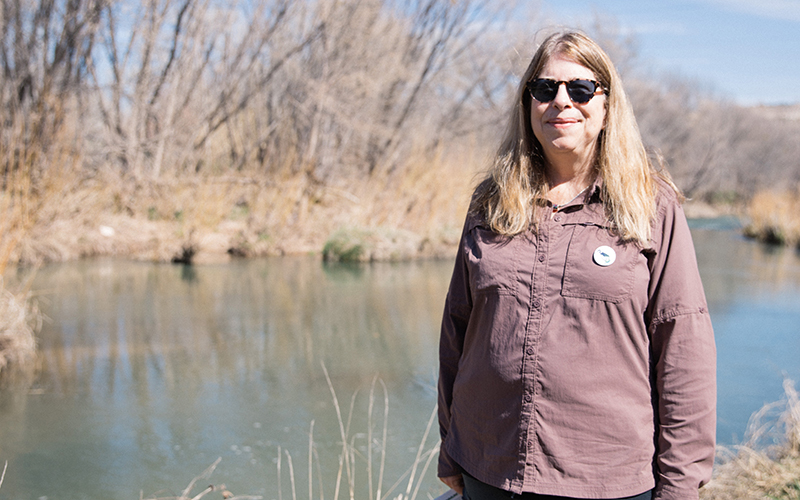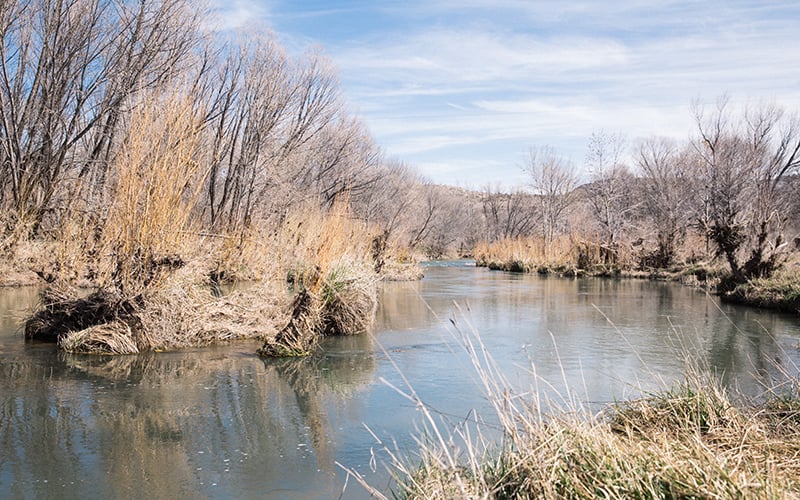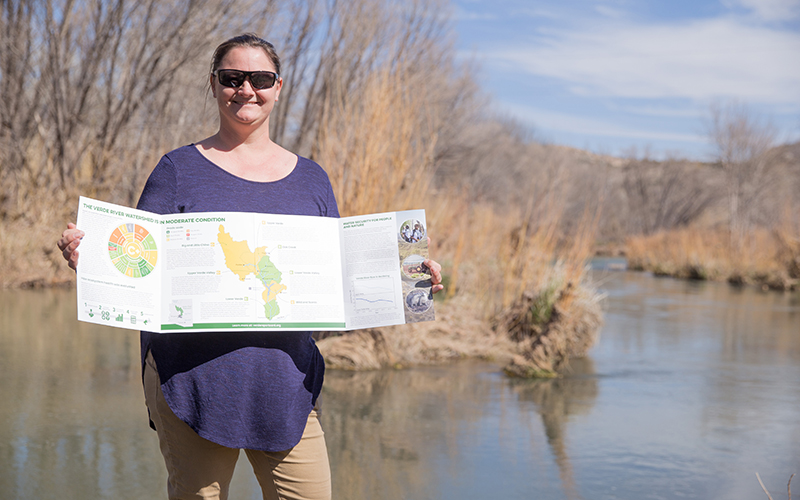CAMP VERDE — The Verde River stretches more than 170 miles from north-central Arizona and down through metro Phoenix, bringing life to the landscape, people and wildlife. This month, the river was rated a C+ in the first Verde Watershed Report Card.
The report, released Feb. 18, took into account the quality of the habitat, the community and the water in and along the river.
“What we see in the Watershed Report Card is kind of the impacts of drought and climate change, but also of that increasing human population,” said Kimberly Schonek, the Verde River project manager for The Nature Conservancy.
The Nature Conservancy and Friends of the Verde River produced the report card in conjunction with stakeholders, the U.S. Forest Service and the University of Maryland Center for Environmental Science.
Nancy Steele, the executive director of Friends of the River Verde, said a C+ grade does not mean the Verde is close to failing.
“Now a lot of people are saying, well, C’s not a great grade, but it actually is very good,” Steele said. “There’s a lot of river systems around the world that are doing much, much worse. We’ve got a healthy river system here.”
Keeping the river healthy is a priority for rancher Jeni O’Callaghan, whose ranch includes a stretch of the Verde.
“We feed our beef, and they’re mostly grass-fed. And so we need grass, and grass doesn’t grow without water,” O’Callaghan said. “We have been irrigating our fields for some time. Currently, we’re in a project with Nature Conservancy to put in irrigation sprinklers as opposed to a flood irrigation.”
The Nature Conservancy is seeking to ensure that others follow O’Callaghan’s example of diverting water responsibly. Schonek said this is especially important because of the decline of the base flow in the Verde River over the past 20 years. The base flow, or the amount of water in the river before rainfall, was a key finding in the report.
“That’s probably the most concerning score; we got a D on that,” Schonek said. “We really need to think about that, because that’s being impacted by drought. The amount of water going into the aquifer, and then by the amount of water being taken out by things like groundwater pumping, and surface water diversions.”
Protecting the river for the public is of high interest to the Forest Service, which provided funding for the report card.
“Keeping the the watersheds healthy through the scorecard, increasing awareness of the public, of the health of those watersheds, ultimately furthers both what the (Phoenix) Valley needs in terms of its water supply, as well as what the Forest Service is aiming for, which is to protect the water supply for our public,” said Kelly Mott Lacroix, a Tonto National Forest hydrologist and watershed program manager.
The Forest Service provided funding to mark the 50th anniversary of the Wild and Scenic Rivers Act in 2018. Sections of the Verde River are protected under the act, making it one of only two Arizona rivers to have that distinction.
“We’re thinking about what that wild and scenic river needs,” Schonek said. “It needs good water quality. It needs to continue to flow. We need fish. We need the uplands in our watershed to be healthy.”
Video by Madison Staten/ Cronkite News
The Nature Conservancy and Friends of the Verde River are working to ensure those needs will continue to be met in the future.
“We have spent so much time over the last 10 years creating priorities around preserving this habitat, around removing invasive non-native species,” Steele said.
Steele said they are now working to plant cottonwood trees, a species native to the area, near the river to increase healthy places for wildlife to live. She believes the life this river brings is not limited to the ecosystem.
“I’ve always felt that connection, especially to our desert rivers, that there’s something magical about a desert river,” she said. “And the Verde is that way, too. I come upon it, and it’s magic. You just feel, you know, you’re in a place that’s a ribbon of life.”



